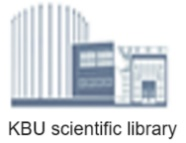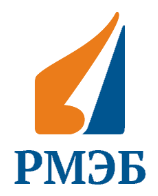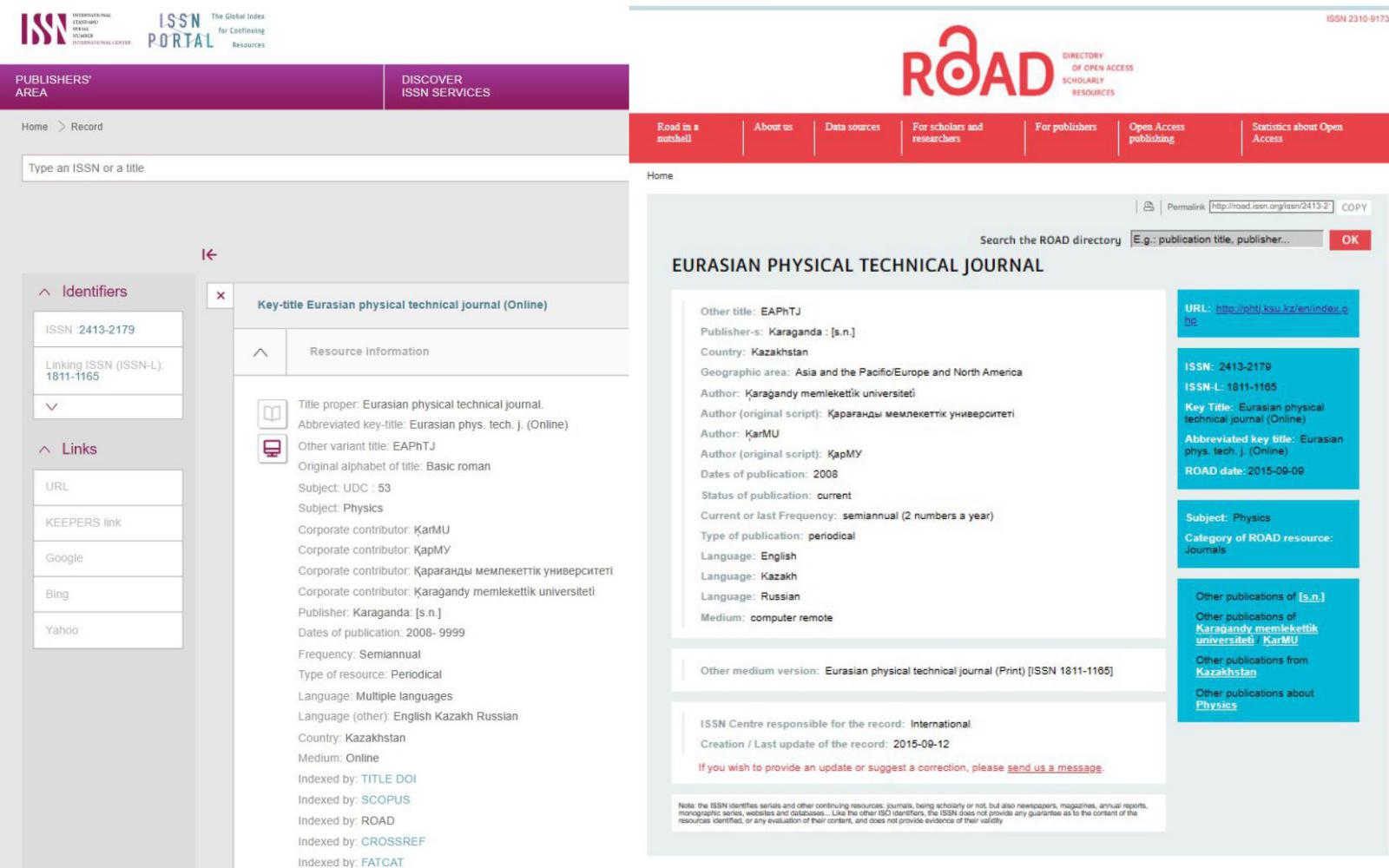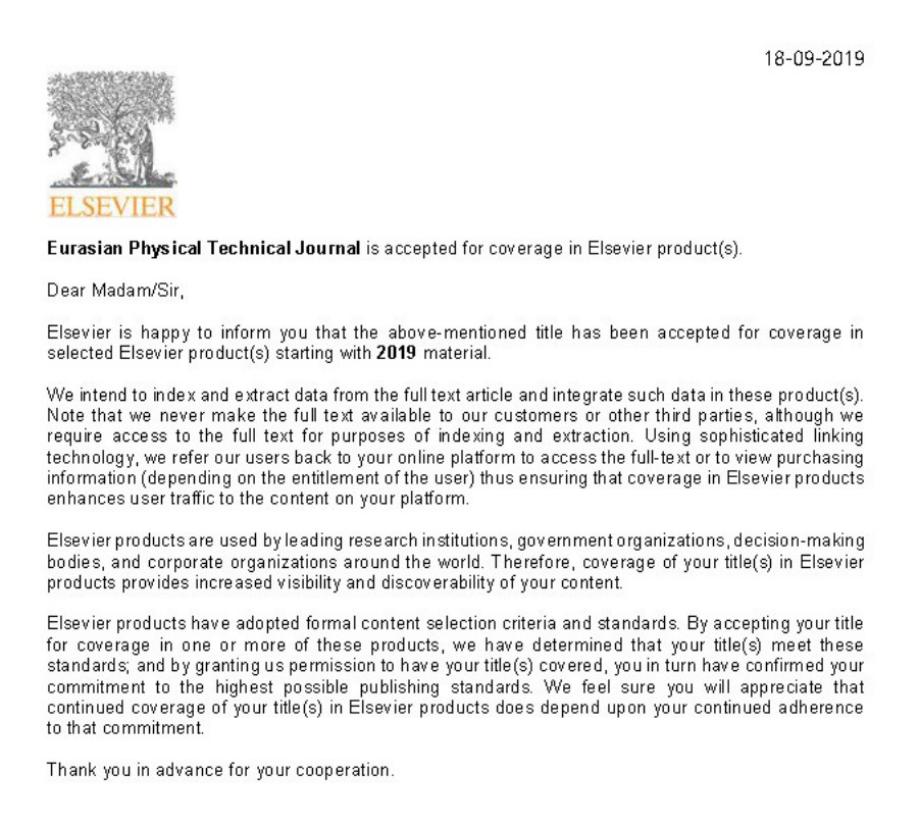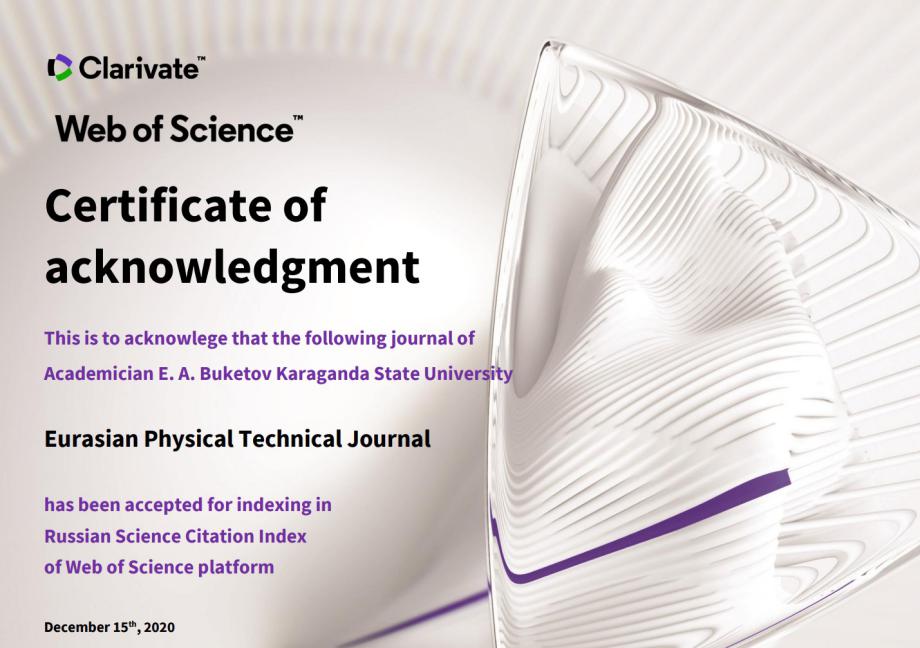Изучение влияния теплопередачи при формовании термопластичной керамики на основе оксида бериллия
DOI:
https://doi.org/10.31489/2025N1/103-114Ключевые слова:
ультразвуковая активация, оксид бериллия, термопластичная суспензия, процесс формования, вязкопластичное состояниеАннотация
Керамика из оксида бериллия (BeO), сформированная с использованием ультразвука, демонстрирует более интенсивное спекание, меньшую усадку и пониженную температуру спекания по сравнению с керамикой, полученной без применения ультразвука. Эффективность сверхбыстрого спекания зависит от сплошности керамического агломерата и правильного расположения частиц. Реологические свойства термопластичных суспензий изменились в результате ультразвуковой активации. Эти изменения связаны с дисперсно-фазовыми процессами и массопереносом. Ультразвуковая активация также несколько улучшает свойства отливок. Увеличение плотности и прочности отливок объясняется эффективным снижением усадки под воздействием ультразвука при затвердевании. То есть компенсация осадки ингот определяется заполнением жидким шликером и его уплотнением под действием давления. Для ультразвукового нагнетания термопластичной суспензии оксида бериллия рекомендуются составы с содержанием связующего от 10,0 до 11,7 %. Поскольку такие связующие составы смешиваются с бериллиевым порошком, превращаясь в высокопрочный шликер, образующий керамику, способную выдерживать большие температуры.
Библиографические ссылки
Shakhov S, Bitsoev G. (1999) Application of Ultrasound in the Manufacture of High Thermal Conductivity Ceramic Articles. Ust-Kamenogorsk: EKTU. [in Russian]
Kiiko V, Makurin Yu, Ivanovsky A. (2006) Beryllium Oxide Ceramics: production, physico-chemical properties, application. Yekaterinburg: Ural Branch of the Russian Academy of Sciences. [in Russian]
Shakhov S. (2007) Controlling the deformation behavior of thermoplastic slurries with ultrasound. Glass and Ceramics, 64, 354–356. https://doi.org/10.1007/s10717-007-0088-2
Shakhov S. (2008) Use of ultrasound in order to intensify molding of high-temperature thermocouple sheaths. Refract. Ind. Ceram., 49,261–263. https://doi.org/10.1007/s11148-008-9074-7
Shakhov S, Gagarin A. (2008) Rheological characteristics of thermoplastic disperse systems treated with ultrasound. Glass and Ceramics, 65, 122–124. https://doi.org/10.1007/s10717-008-9030-5
Akishin G, Turnaev S, Vaispapir V., Kiiko V. S., Shein I. R., Pletneva E. D., Timofeeva M.N., Ivanovskii A.L. (2011) Composition of beryllium oxide ceramics. Refractories and Industrial Ceramics, 51, 377–381. https://doi.org/10.1007/s11148-011-9329-6
Akishin G, Turnaev S, Vaispapir V., Gorbunova M.A., Makurin Yu.N., Kiiko V.S., Ivanovskii A. L. (2009) Thermal conductivity of beryllium oxide ceramic. Refractories and Industrial Ceramics, 50, 465–468. https://doi.org/10.1007/s11148-010-9239-z
Zhapbasbayev U., Sattinova Z., Ramazanova G. (2024) Simulation of Hot Casting Shrinkage of Thermoplastic Beryllium Oxide Slurries with Ultrasonic Activation. Engineered Science, 32, 1294. https://doi.org/10.30919/es1294
Sattinova Z.K., Ramazanova G.I., Zhapbasbayev U.K., Assilbekov B.C., Musenova E.K. (2018) Investigation of thermal conditions of the molding process slurry beryllium oxide. Eurasian Physical Technical Journal, 15(2), 30. Available to: https://phtj.buketov.edu.kz/index.php/EPTJ/article/view/528/240
German R, Bose A. (1997) Injection molding of metals and ceramics. New Jersey: Princeton.
Bingham E.C. (1922) Fluidity and Plasticity. New York: McGraw-Hill.
Wilkinson W.L. (1960) Non-Newtonian Fluids. Fluid Mechanics, Mixing and Heat Transfer. London: Pergamon Press.
Pakhomov M.A., Zhapbasbayev U.K., Bosinov D.Zh. (2023) Numerical simulation of the transition of a Newtonian fluid to a viscoplastic state in a turbulent flow. Journal King Saud University Science, 35(2), 102522. https://doi.org/10.1016/j.jksus.2022.102522
Zhapbasbayev U.K., Bekibayev T.T., Pakhomov M.A., Ramazanova G.I. (2024) Heat transfer of crude waxy oil with yield stress in a pipe. Energies, 17, 4687. https://doi.org/10.3390/en17184687
Dvinskikh Yu, Popil’skii R, Kostin L, Kulagin V. (1979) Thermophysical properties of thermoplastic casting slurries of some high-refractory oxides. Ogneupory, 12, 37–4. [in Russian]
Zhapbasbayev U, Ramazanova G, Kenzhaliyev B., Sattinova Z., Shakhov S. (2016) Experimental and calculated data of the beryllium oxide slurry solidification. Appl. Therm. Eng., 96, 593–599. https://doi.org/10.1016/j.applthermaleng.2015.11.114
Sattinova Z., Assilbekov B., Bekenov T., Ramazanova G. (2024) Computational investigation of the influencing parameters on the solidification of thermoplastic beryllium oxide slurry in a cylindrical shell. Ceramics, 7(3), 906-925.https://doi.org/10.3390/ceramics7030059
Voller V, Prakash C. (1987) A fixed grid numerical modeling methodology for convection-diffusion mushy region phase-change problems. Int. J. Heat Mass Transfer, 30, 1709–1719. https://doi.org/10.1016/0017-9310(87)90317-6
Voller V, Swaminathan C, Thomas B. (1990) Fixed grid techniques for phase change problems: a review. Int. J. Numer. Methods Fluids, 30, 875–898.https://doi.org/10.1002/nme.1620300419
Hu H., Argyropoulos S. (1996) Mathematical modeling of solidification and melting: a review. Modelling Simul. Mater. Sci. Eng., 4, 371–396. https://doi.org/10.1088/0965-0393/4/4/004
Moraga N, Andrade M, Vasco D. (2010) Unsteady conjugated mixed convection phase change of power law non-Newtonian fluid in a square cavity. Int. J. Heat Mass Transfer, 53, 3308-3318. https://doi.org/10.1016/j.ijheatmasstransfer.2010.02.044
Carmona M, Cortes C. (2014) Numerical simulation of a secondary aluminum melting furnace heated by a plasma torch. J. Mater. Process. Technol., 214, 334-346. https://doi.org/10.1016/j.jmatprotec.2013.09.024
Bannach N. (2014) Phase Change: Cooling and Solidification of Metal. Available to: https://www.comsol.com/blogs/phase-change-cooling-solidification-metal/
COMSOL Inc. (2014) Available to: http://www.comsol.com/
Chung T. (2002) Computational Fluid Dynamics. Cambridge: Cambridge University Press.
https://doi.org/10.1017/CBO9780511606205
Kiiko V.S., Vaispapir V.Ya. (2014) Thermal conductivity and prospects for application of BeO ceramic in electronics. Glass and Ceramics, 11, 12–16. https://doi.org/10.1007/s10717-015-9694-6
Zhao-Hui R., Xiu-Yan G., Yuan Y., He-Ping T. (2021) Determining the heat transfer coefficient during the continuous casting process using stochastic particle swarm optimization. Case Stud. Therm. Eng., 28, 101439. https://doi.org/10.1016/j.csite.2021.101439
Tannehill J.C., Anderson D.A., Pletcher R.H. (2012) Computational Fluid Mechanics and Heat Transfer, 763. Available to: https://www.iust.ac.ir/files/mech/ayatgh_c5664/files/Computational_Fluid_Mechanics_and_Heat_ Transfer___Anderson__Main_Reference.pdf
Cebeci T., Bradshaw P. (1988) Physical and Computational Aspects of Convective Heat Transfer. https://doi.org/10.1007/978-1-4612-3918-5



